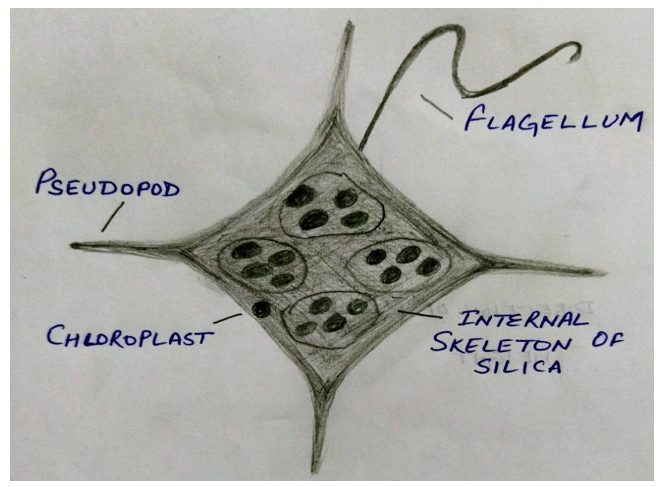This set of Marine Biotechnology Multiple Choice Questions & Answers (MCQs) focuses on “Phytoplankton”.
1. Which of the following is not a major division of the marine phytoplankton?
a) Archaebacteria
b) Cyanobacteria
c) Chrysophyta
d) Dinophyta
View Answer
Explanation: Marine primary producers – the phytoplankton are majorly divided into three categories namely Cyanobacteria (kingdom Monera), Chrysophyta and Dinophyta (kingdom Protista).
2. The smallest phytoplankton cells are _______________
a) Microplankton
b) Picoplankton
c) ultraplankton
d) nanoplankton
View Answer
Explanation: The most important primary producers in al marine environments are nanoplankton sized or smaller. Smallest phytoplankton cells are picoplankton (<2 μm) followed by ultraplankton (2-5 μm), nanoplankton (5-20 μm) and microplankton.
3. Which phytoplankton is responsible for the color and name of the Red Sea?
a) Synechococcus
b) Oscillatoria
c) Prochlorococcus
d) Lyngbya
View Answer
Explanation: Oscillatoria is a genus of filamentous cyanobacteria which reproduces asexually by fragmentation. The members of this genus are rich in red accessory photosynthetic pigment phycoerythrin, causing the occasional red color of the Red Sea.
4. Phycobilin is responsible for nitrogen fixing abilitiy of certain cyanobacteria.
a) True
b) False
View Answer
Explanation: Phycobilin is an accessory photosynthetic pigment present in addition to chlorophyll a in cyanobacteria, giving the species a bluish hue (hence the name blue-green algae). Nitrogen fixing enzymes however need anaerobic environment to work and are housed in structures called heterocysts, present in some nitrogen-fixing filamentous cyanobacteria.
5. Which of the following cyanobacteria is a diazotroph?
a) Oscillatoria
b) Microcystis
c) Lyngbya
d) Trichodesmium
View Answer
Explanation: Diazotrophs fix atmospheric nitrogen into ammonium. Trichodesmium is a diazotroph and an important primary producer in the North Atlantic Ocean. Due to the presence of intracellular gas vesicles, it fixes atmospheric nitrogen under fully aerobic conditions.
6. In addition to chlorophyll a, which of the following pigment is found in the member of Chrysophyta?
a) Chlorophyll b
b) Chlorophyll c
c) Chlorophyll d
d) Chlorophyll d
View Answer
Explanation: The members of Chrysophyta are divided into two classes namely the Chrysophyceae and the Bacillariophyceae. The primary photosynthetic pigment is chlorophyll a present in their chloroplasts and accessory pigments are chlorophyll c and xanthophylls.
7. Which is a characteristic of coccolithophores?
a) Rigid structure
b) Calcareous plates
c) Silica shells
d) Heterocysts
View Answer
Explanation: Coccolithophores belong to the Chrysophyceae division of the Chrysophyta. They are found usually in warm tropical and temperate waters (in areas of high light intensity). Their characteristic feature is presence of small calcareous plates (coccoliths) embedded in the cell walls.
8. The organism shown in the figure is a ________________

a) dinoflagellate
b) silicoflagellate
c) diatom
d) coccolithophore
View Answer
Explanation: The organism shown in the figure is Dictyocha, a common marine silicoflagellate. Silicoglagellates are simple unicellular eukaryotes having internal silicate structures and few chloroplasts.
More MCQs on Phytoplankton:
Sanfoundry Global Education & Learning Series – Marine Biotechnology.
To practice all areas of Marine Biotechnology, here is complete set of 1000+ Multiple Choice Questions and Answers.
If you find a mistake in question / option / answer, kindly take a screenshot and email to [email protected]
